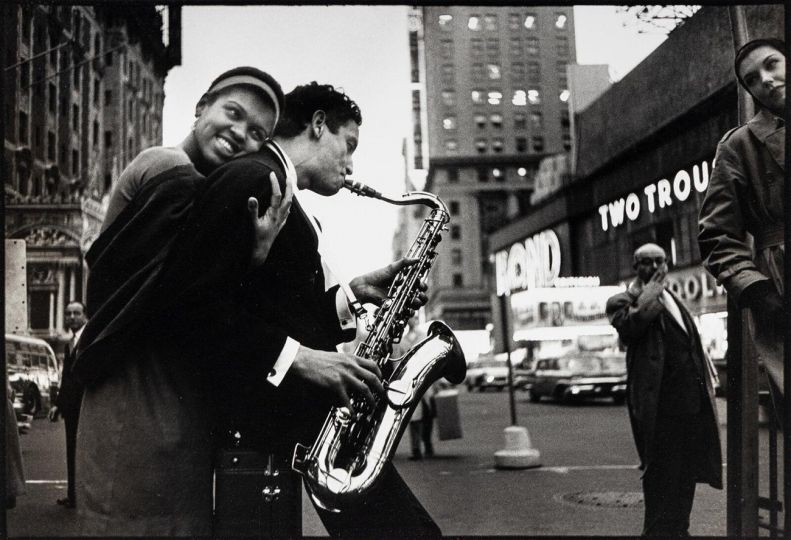Founded ten years ago, the collective Les Globules Noirs brings together three artists who “grew up together in photography.” Passionate about creating images, confronting them, and making them interact, Caroline Lusseaux, Andréa Wasaff, and Céline Gobillard invite us into the making of La Résistance de nos corps à l’oubli (The Resistance of Our Bodies to Memory Lapse), a work that is as intimate as it is collective.
When and how did the collective come about?
Andréa Wasaff: It was in 2015, almost ten years ago, so it’s time to celebrate! We met during a workshop at the Quinzaine Photographique Nantaise.
Caroline Lusseaux: At that point, we were all starting to take photography seriously. The initial desire was to show each other our images, to have an external, kind, and friendly eye on them. Quite quickly, we started taking photos together and creating collective adventures.
Andréa Wasaff: We did a photographic walk exercise, just the three of us: we would take a train, got off anywhere, and began mixing our photographs, creating dialogues between our images.
The work quickly became genuinely collective.
Caroline Lusseaux: We each come from somewhat different backgrounds: Andréa from cinema, Céline from writing and dance, and I come from graphic design. Photography is our common language. We’re not a collective with big egos; our goal was really to mix everything and work together from start to finish. So much so that sometimes we don’t even know whose image is whose!
Céline Gobillard: Just two days ago, we said to each other, “It’s as if we grew up together in photography.”
After a residency or a project aimed at reactivating a photographic laboratory in a neighborhood community house in Nantes, how did you embark on what would become La Résistance de nos corps à l’oubli?
Caroline Lusseaux: That was six years ago. We started sending each other little notes, phrases, quotes, and images. One of us would send a reference, and the three of us would create photographs based on it.
Céline Gobillard: If one of us sent a song, it could evoke something for another, who would then respond, almost like a cadavre exquis (exquisite corpse).
A kind of artistic game taking shape, in a way?
Caroline Lusseaux: At first, it was just an excuse to create images. Then, we started meeting and putting these images together, confronting them with each other.
Céline Gobillard: We noticed certain themes emerging: memory, mementos, bodies, family, childhood traumas. How to build oneself with memories and reminiscences that resurface. We wrote a poetic text from all of this, which became a new reference for creating other images.
Andréa Wasaff: And the title La Résistance de nos corps à l’oubli comes from that text, from that moment.
Céline Gobillard: This process was improvised. That’s why it took time. We kept making images until last summer.
Caroline Lusseaux: We enjoy this aspect of experimentation and improvisation.
How does a project like this take the form of a photo book?
Céline Gobillard: That’s yet another step! When Jérôme Blin and Gaëtan Chevrier from Éditions Sur la Crête offered to publish a project, we gave them our photos and our corpus, and they created something else from it.
Caroline Lusseaux: Gaëtan and Jérôme asked us to send new images, and the project evolved a lot from there.
Céline Gobillard: We were three to start the project, and suddenly we were five. Then six, because we also asked Aude Grandveau to write poems based on the emotions she felt when looking at the images.
Céline Gobillard: That’s what we liked too: letting go of what we had initially envisioned. But we were confident, because we’ve known each other for a long time.
Caroline Lusseaux: The first set of images we presented was entirely black and white. Gaëtan and Jérôme added some color, a bit of lightness, a bit of brightness.
Andréa Wasaff: If we had published the book ourselves, it would have been much darker. They saw things that we can only see now. They had the perspective we struggled to have, even as a threesome.
Céline Gobillard: When there are the three of us, we can also face dead ends. So, letting go and letting others decide of the fate of it all helped move things forward. We worked with people who were close to us, kind, and whom we knew were sensitive to the project. When Jérôme and Gaëtan staged the images, we quickly agreed with them. The same goes for Aude’s poems. We are very happy with the result, and with the work, which was collective from start to finish.
More information:
















